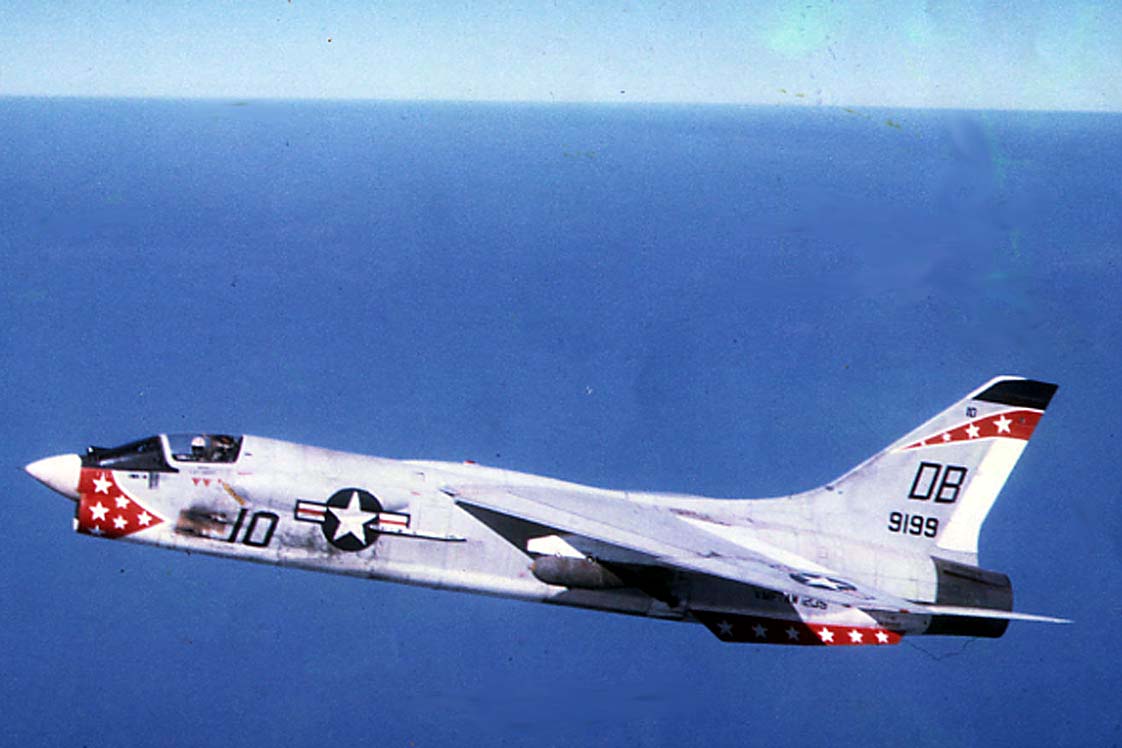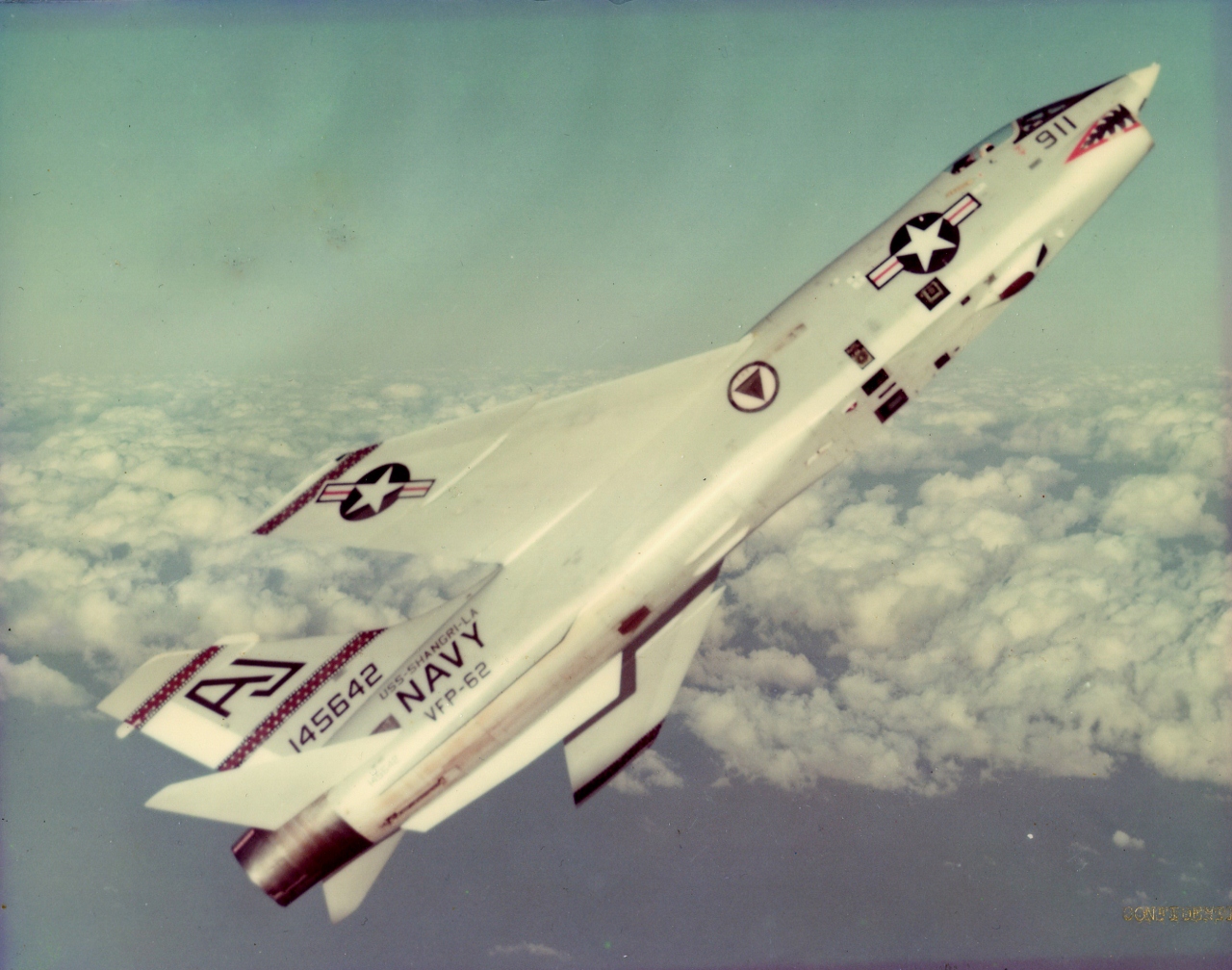Wicked, GE!!!
What model is that? I didn't think Henk had converted the "B" (no strakes). That (and indeed all of Pierre Llereux's paints were among some of the best, back in the day. Still keepers - and esp that one.
If a strake-less B is available native, then that might be the model I (try to) plop one of the RF paints on to ...
Thanks,
dl
You are correct in that is one of Pierre Liereux's repaints
from here
http://library.avsim.net/search.php?SearchTerm=drone+crusader&CatID=root&Go=Search
If you look at the files inside the texture it looks a little strange in the there are Two liveries in the one texture.
Now the model it calls for I got/used from Dons converted F-8's and is the model.F8U-1E.
I did not convert the bmps to DDS files. They are running on raw bmp's.
I set up the aircraft.cfg as such:
[fltsim.x]
title=ALPHA DF-8F Crusader
sim=ALPHA_F-8v2 <<<<<
Changed this line to as it is now.
model=F8U-1E <<<<
Added this model to the Henk's F8 native V2.
panel=
sound=
texture=drone
KB_checklists=f8_check
kb_reference=
ui_manufacturer=Vought
ui_type=F-8 Crusader
ui_variation=DF-8F Drone Controller
description=© ALPHA Simulations 2005\n\nIn 1953 the F8U-1 Crusader won the Navy competition for the new carrier-based day fighter. It flew supersonic on its maiden flight in 1955. A Crusader set a national speed record in 1956 by flying over 1000 mph, for which it won the Thompson Trophy. In 1957 Major John Glenn flew an F8U non-stop from Los Angeles to new York, setting a transcontinental speed record. In 1958 Vought received the first Certificate of merit ever awarded an aircraft manufacturer by the Navy Bureau of Aeronautics for the design, development and production of a US Navy aircraft. In the Vietnam conflict the Crusader had the highest kill ratio over communist jets of any Navy aircraft. The F8U series enjoyed a long service life which was extended in the 1960s by remanufacturing and updating existing aircraft. Crusaders flew in Navy reserve units until 1987, and the French navy flew its Crusaders well into the 1990’s.
atc_id_color=0x00000000
atc_heavy=0
atc_id_font=Verdana,-11,1,600,0
visual_damage=0
atc_id=
atc_airline=
atc_flight_number=
atc_parking_types=MIL_COMBAT
Now the wierd think is the in that texture you will see some bmps for another squadron. VF-84. Both squadron textures are in the one drone texture.
Can't figure out how to split them up to their own separate textures.
So, that's my story and I'm sticking to it.

















